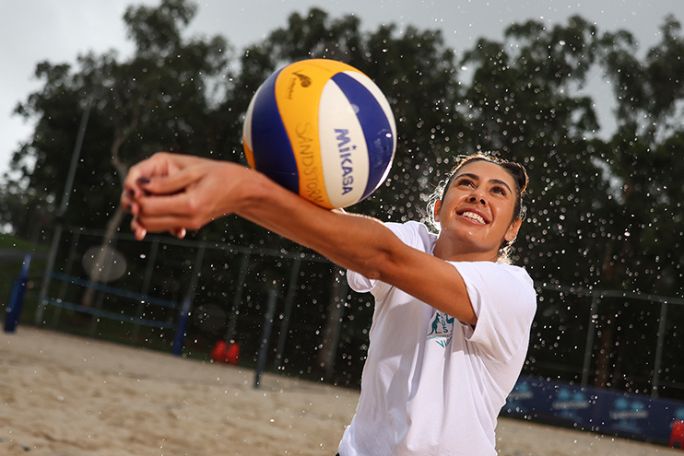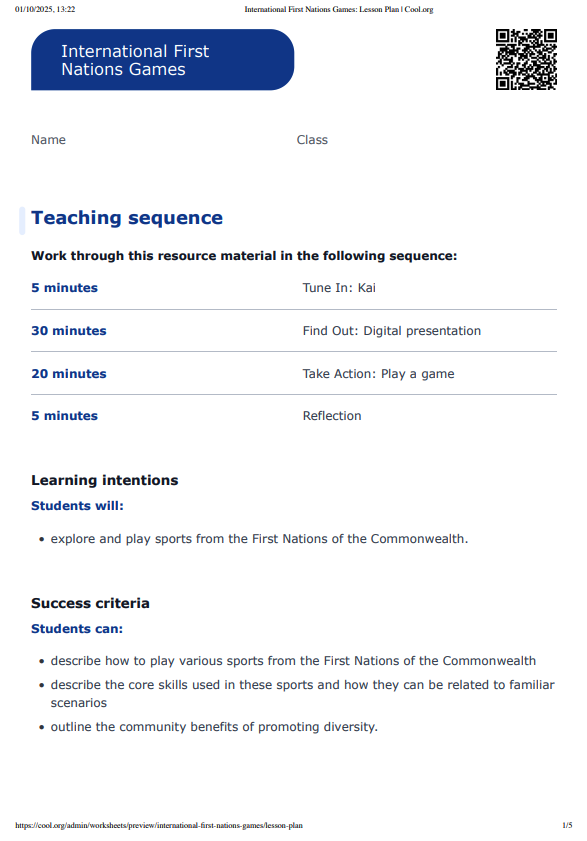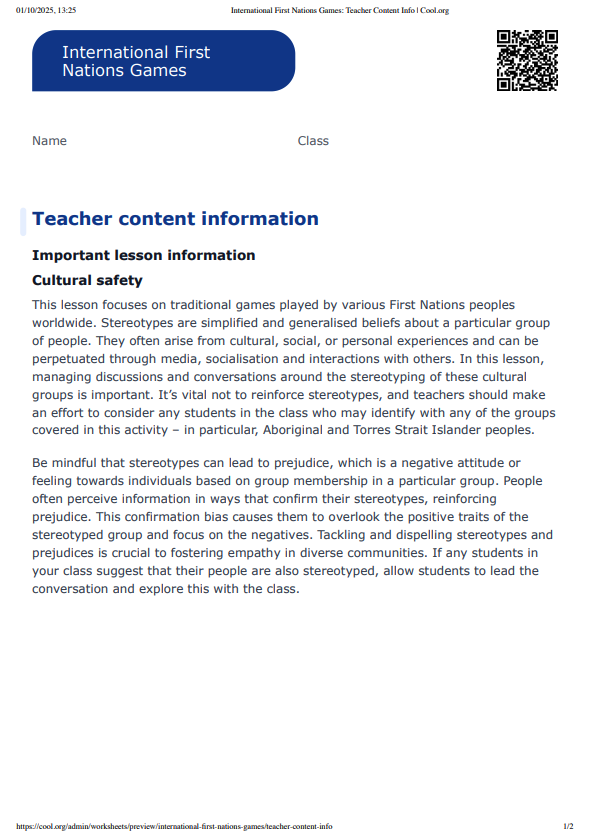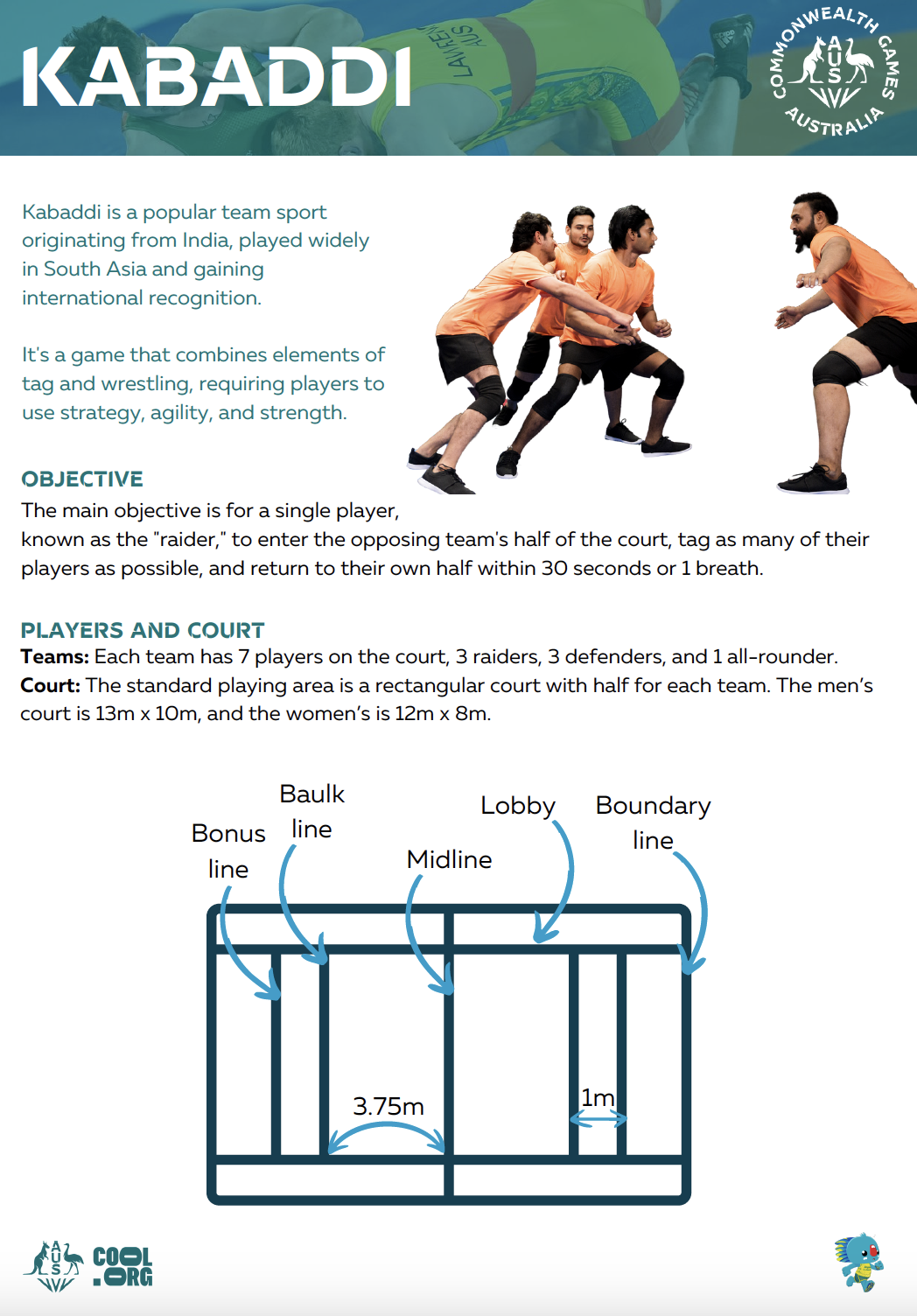Lesson summary
Students will explore First Nations games from Commonwealth countries. Students will describe how to play different sports, and understand the core skills used in these sports, through collaborative research and the play of traditional games.
Learning intentions
Students will:
- explore and play sports from the First Nations of the Commonwealth.
Success criteria
Students can:
- describe how to play various sports from the First Nations of the Commonwealth
- describe the core skills used in these sports and how they can be related to familiar scenarios
- outline the community benefits of promoting diversity.
Lesson guides and printables
Lesson details
Skills
This lesson is designed to build students’ competencies in the following skills:
- adaptability
- collaboration
- communication
- community engagement
- cultural understanding
- initiative
- intercultural understanding
Curriculum Mapping
Australian Curriculum (v9.0) content description:
Year 5 and 6 Health and Physical Education
Students can:
- transfer familiar movement strategies to different movement situations (AC9HP6M02)
- describe and implement strategies to value diversity in their communities (AC9HP6P05)
- analyse, refine and transfer movement skills in a variety of movement situations (AC9HP6M01).
Relevant parts of Year 5 and 6 Health and Physical Education achievement standards: Students can refine and modify movement skills and apply movement concepts across a range of situations. They transfer movement strategies between situations and evaluate the impact on movement outcomes as well as propose strategies to demonstrate respect, empathy and inclusion.
General capabilities: Digital Literacy, Intercultural Understanding, Literacy
Cross-curriculum priority: Aboriginal and Torres Strait Islander Histories and Cultures, Asia and Australia’s Engagement with Asia
Level of teacher scaffolding: Low - facilitate class discussions and support students in leading a game.
UN Sustainable Development Goals
- Target 4.7: By 2030, ensure that all learners acquire the knowledge and skills needed to promote sustainable development, including, among others, through education for sustainable development and sustainable lifestyles, human rights, gender equality, promotion of a culture of peace and non-violence, global citizenship and appreciation of cultural diversity and of culture’s contribution to sustainable development.
Resources Required
- Ayo equipment - 2 x dozen-egg carton and 48 counters per pair
- Baggataway equipment - lacrosse sticks and ball
- ball for kai - a blow-up beach ball is ideal, but any light ball will work
- device capable of displaying audiovisual material
- Sepak takraw equipment - volleyball and a court divided by a net
- First Nations Sports Factsheets
Additional Info
These resources have been created with the support of the Australian Commonwealth Games Team, via Commonwealth Games Australia.
The Australian Commonwealth Games Team are set to take on the athletes of he world at the Glasgow 2026 Commonwealth Games from next year, and together the more than 250 athletes in green and gold aim to be the top nation at the Games in terms of gold and overall medals won, the number of medallists, and the number of sports winning medals.
You can cheer on Australia’s best across the screens of 7 and 7Plus from 23 July 2026.
Related Professional Learning
Beginning to Include First Nations Peoples’ Perspectives in Your Classroom
Quick Summary: This course is designed to inform and upskill educators in incorporating Aboriginal and Torres Strait Islander perspectives in the classroom. It guides terms of reference, protocols and strategies for an inclusive classroom that celebrates diversity.




Welcome back!
Don't have an account yet?
Log in with:
Create your free Cool.org account.
Many of our resources are free, with an option to upgrade to Cool+ for premium content.
Already have an account?
Sign up with:
By signing up you accept Cool.org's Terms and Conditions(Opens in new tab) and Privacy Policy(Opens in new tab).